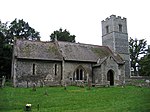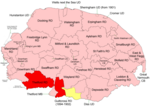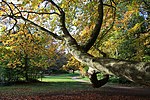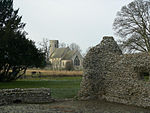Thetford Forest
Breckland DistrictForest HeathForests and woodlands of NorfolkForests and woodlands of Suffolk

Thetford Forest is the largest lowland pine forest in Britain and is located in a region straddling the north of Suffolk and the south of Norfolk in England. It covers over 19,000 ha (47,000 acres) in the form of a Site of Special Scientific Interest.
Excerpt from the Wikipedia article Thetford Forest (License: CC BY-SA 3.0, Authors, Images).Thetford Forest
Harling Drove Road, Breckland District Weeting-with-Broomhill
Geographical coordinates (GPS) Address Nearby Places Show on map
Geographical coordinates (GPS)
| Latitude | Longitude |
|---|---|
| N 52.46028 ° | E 0.64797 ° |
Address
Harling Drove Road
Harling Drove Road
IP27 0RE Breckland District, Weeting-with-Broomhill
England, United Kingdom
Open on Google Maps










